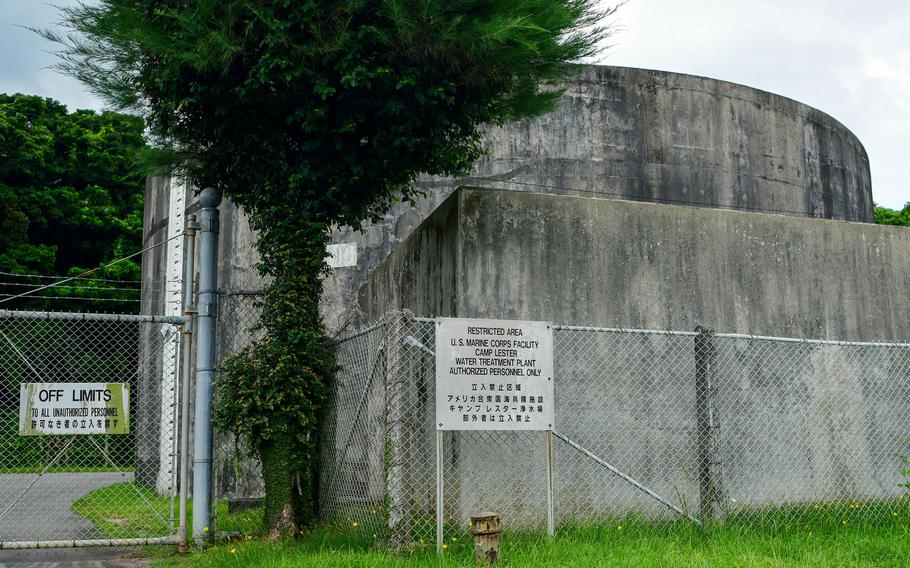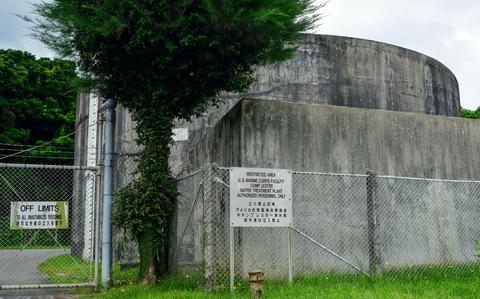
The Camp Lester Water Treatment Plant on Okinawa is pictured on Oct. 28, 2025. (Ryan M. Breeden/Stars and Stripes)
CAMP LESTER, Okinawa — An Okinawa town cannot immediately satisfy a request for additional water from a neighboring Marine Corps base that detected elevated levels of “forever chemicals” in its storage tank, according to a town official.
In June 2024, the U.S. military asked Chatan town for an extra 181,412 cubic yards of water annually for Camp Lester, a spokeswoman for the town’s Water and Sewage System Division said by phone Wednesday.
That amount is enough to fill more than 55 Olympic-sized swimming pools. Chatan already provides 65,920 cubic yards of water to the base each year.
The request from the Okinawa Defense Bureau on behalf of Marine Corps Installations Pacific followed the discovery that levels of PFAS in the base’s water tank exceeded the U.S. Environmental Protection Agency’s limit of 4 parts per trillion, an Okinawa Prefecture Enterprise Bureau spokesman said by phone Wednesday. The defense bureau represents Japan’s Ministry of Defense.
PFAS, which includes PFOS and PFOA, are synthetic compounds dubbed as “forever chemicals” by the EPA because they persist in the environment and the human body. Studies in animals suggest exposure may increase the risk of tumors in the liver, breasts, testicles and pancreas, according to the American Cancer Society.
Chatan cannot provide more water until 2028 because doing so would “cause problems to the current system,” the spokeswoman said. The town was already planning to build another reservoir to meet growing demand, not to serve the base, the Chatan spokeswoman said.
“We’ve only just begun to consider the specifics and schedule for the reservoir,” she said. “We can’t release anything at the moment.”
Some Japanese government officials must speak to the press only on condition of anonymity.
PFAS was detected at 22 parts per trillion at the finished water reservoir on Lester’s south side on Nov. 13, according to a document on Marine Corps Installations Pacific’s website. Water for the south side, which includes housing and Lester Middle School, is supplied by the Camp Lester Water Treatment Plant and stored in the reservoir.
On the north side, PFAS was detected at levels as high as 4.7 parts per trillion throughout last year, according to another water quality report on the website. Housing in that area receives water from the Chatan treatment plant, which is stored in an Air Force tank on base.
As of 2024, the Department of Defense action level for PFAS was 70 parts per trillion. DOD will start enforcing the EPA’s new PFAS limit at overseas installations starting in April 2029, according to the water quality report.
The spokesman for U.S. Forces Japan, Air Force Col. John Severns, declined to answer questions by phone Tuesday, citing the ongoing federal government shutdown.


AloJapan.com